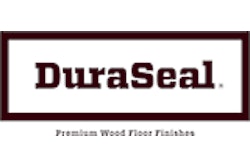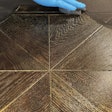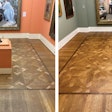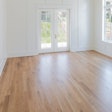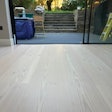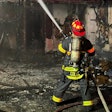
In my job as a contractor specialist for DuraSeal, I frequently get technical calls about a common problem: Rushing the staining and finishing process on a job.
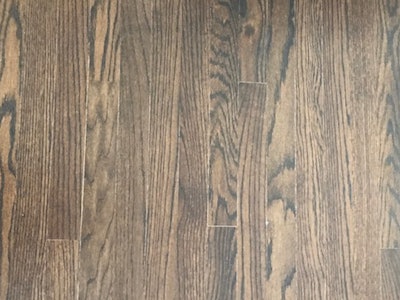 The stain on this floor was not completely dry when it was top-coated with a two-component water-based finish.
The stain on this floor was not completely dry when it was top-coated with a two-component water-based finish.
One area where pros tend to rush is water-popping. Many people water-pop the floor before staining and then wait until the floor is visibly dry or feels dry to the touch before going ahead and staining. An improvement on that is when some people wait overnight before staining. However, the only way to really check if the floor is dry enough to stain is to use a moisture meter before and after. Take a reading before you water-pop, then wait to stain until you get the same reading on the meter. If the floor still has moisture from water-popping, the stain can look uneven.
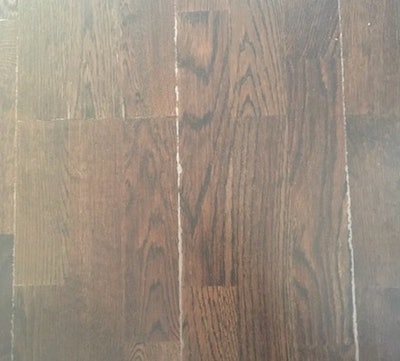 The top layer of this oil-modified urethane is peeling off due to insufficient dry time of the coat underneath and a lack of abrasion.
The top layer of this oil-modified urethane is peeling off due to insufficient dry time of the coat underneath and a lack of abrasion.
Many people also tend to rush dry times with stain, even with the newer two-hour stains on the market. Keep in mind that dry times in a lab can be different from dry times on an actual job site, where you are often dealing with less-than-ideal environmental conditions that can lengthen dry times. Also, anywhere the stain isn't exposed to oxygen—gaps, cracks, chips, areas of open grain—the solvents can't evaporate easily, so drying is slowed down.
Problems from coating over stain that isn't totally dry can vary by finish type. With oil-modified poly, you can see issues including solvent lock, which presents a white haze in the finish coat and/or white lines at the board edges that often indicate lack of adhesion. With waterborne finishes, you are likely to see white lines bridging across gaps, peeling and hazy finish.
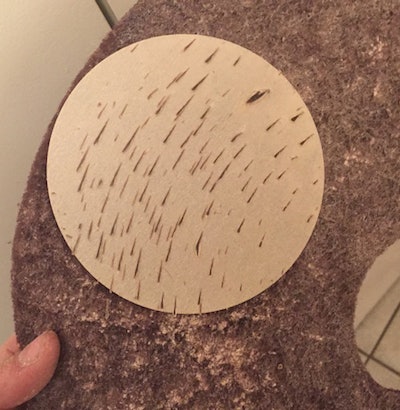 This abrasive is gumming up due to insufficient dry time of the two-component water-based finish.
This abrasive is gumming up due to insufficient dry time of the two-component water-based finish.
Another common rushing scenario is not allowing earlier coats to dry before applying another coat. With oil-based poly, you can end up with alligatoring or an orange-peel texture that develops from the uncured solvent trying to escape. Waterborne products can end up with peeling, white lines and more.
As contractors, we all know how tempting it is to try to just get through a job or avoid having to drive all the way back to job site again the next day, but usually the risks of rushing just aren't worth it. Pay attention to manufacturers' recommended dry times and keep in mind that they depend on the temperature and humidity on your job site. And remember this: Even if something seems dry enough to abrade or coat, always consider the recommended dry time as the absolute minimum.
In my next post, we'll look at what happens when you take shortcuts with a sanding job.
More from Toby Merrill:
Sponsored Blog: Years of Experience Don't Equate to Years of Knowledge
Sponsored Blog: The Real Cost of Bad Sanding
Sponsored Blog: How to Use the Color Wheel to Get the Color You Want















